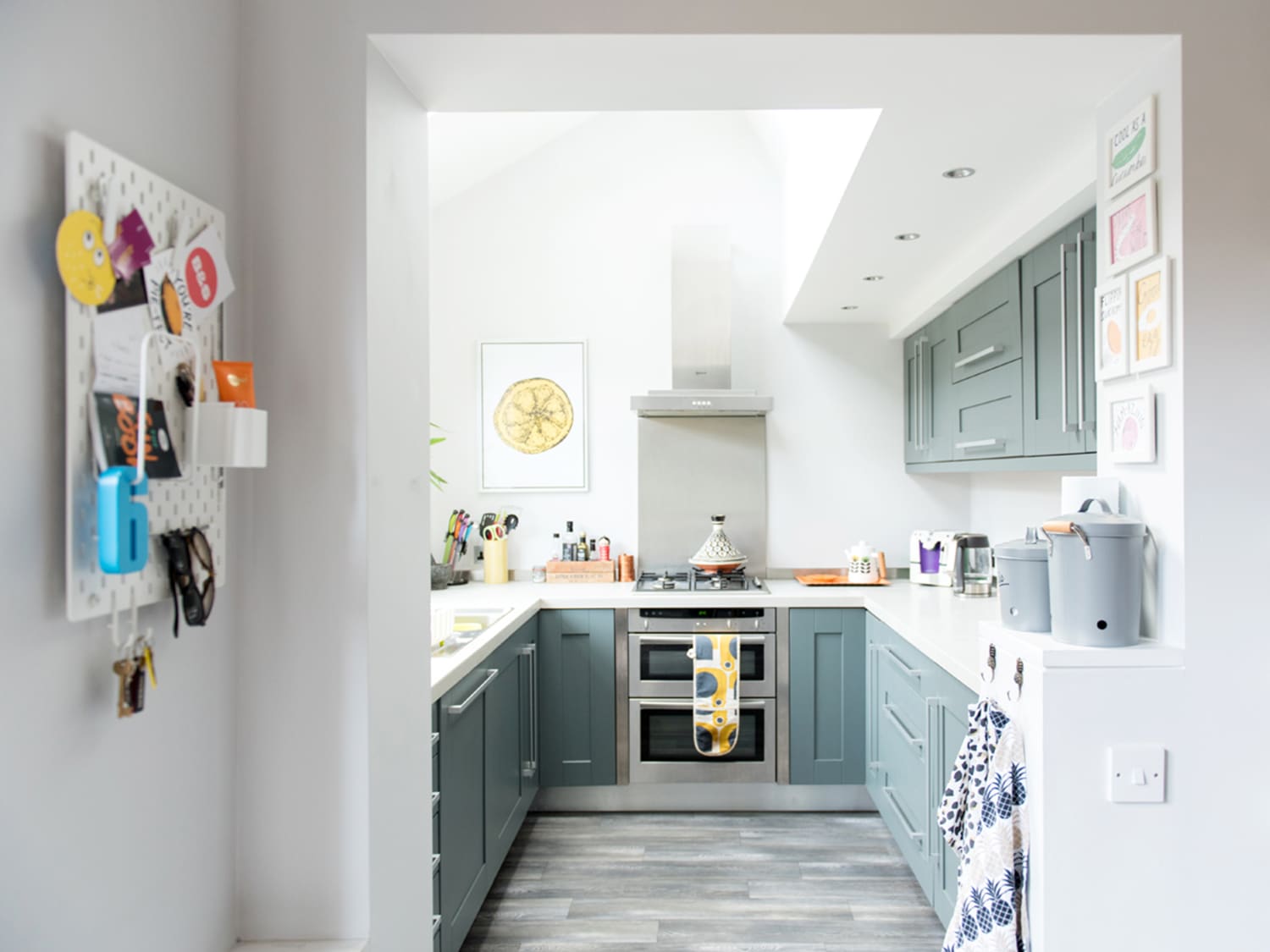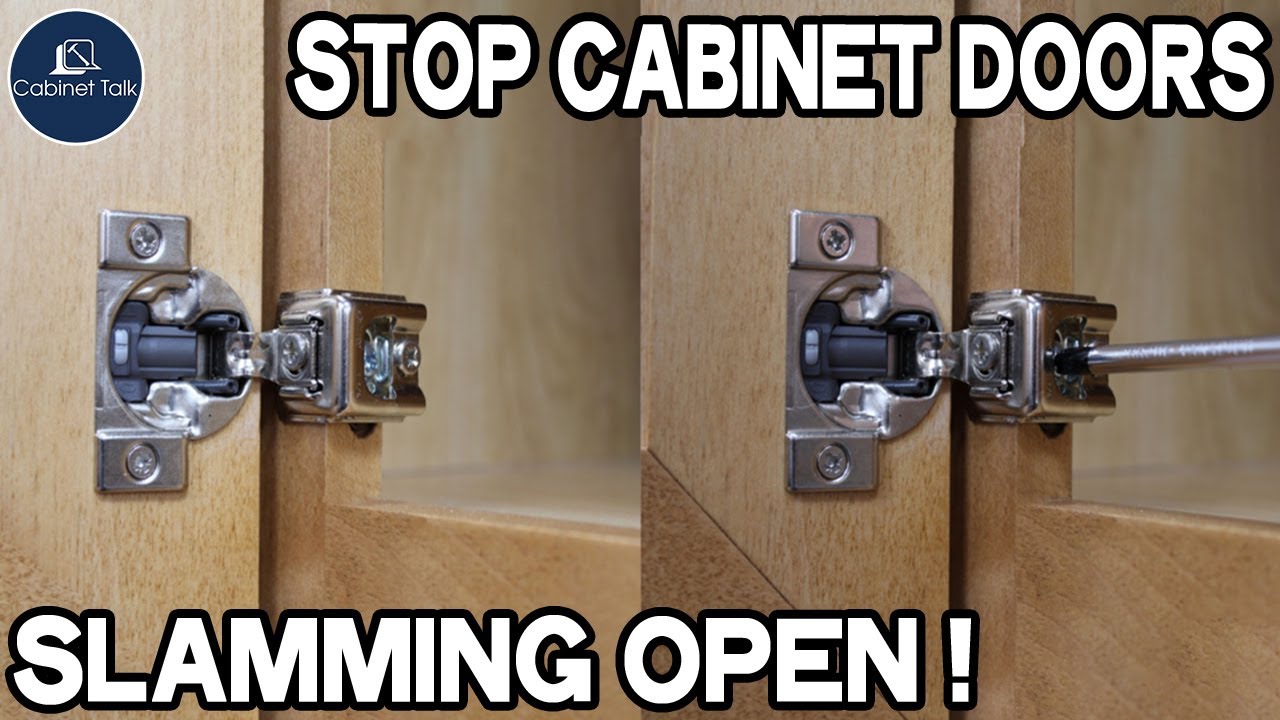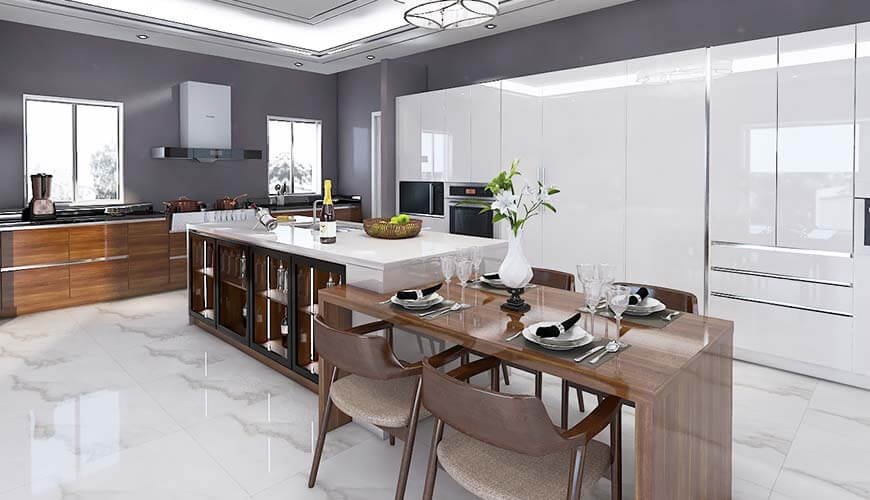Install soft-close hinges or dampers to prevent kitchen cabinets from slamming. These solutions ensure quiet and safe cabinet operation.
Kitchen cabinets slamming can be a daily nuisance and pose safety risks. Installing soft-close hinges or dampers is an effective solution. Soft-close hinges gently close the cabinet doors, preventing loud noises. Dampers, on the other hand, absorb the force, ensuring a smooth and silent close.
Both options are easy to install and can be a DIY project. This upgrade not only enhances the kitchen’s functionality but also extends the lifespan of your cabinets. It provides a more pleasant cooking environment and protects little fingers from getting caught in the doors.

Table of Contents
ToggleSoft-close Hinges
Stop kitchen cabinets from slamming with soft-close hinges. These hinges help your cabinets close quietly and smoothly. They are easy to install and make your kitchen more enjoyable.
How They Work
Soft-close hinges have built-in hydraulic mechanisms. These mechanisms slow down the door’s movement. As you close the door, the hinge catches it. Then, the hydraulic system gently pulls the door closed. This process prevents slamming and reduces noise.
Installation Tips
Follow these tips for installing soft-close hinges:
- Remove the old hinges from your cabinet doors.
- Align the new soft-close hinges with the existing screw holes.
- Secure the hinges with screws.
- Adjust the hinges for a perfect fit using a screwdriver.
- Test the door to ensure it closes softly.
For a quicker installation, use a drill. This tool will speed up the process. Make sure to double-check the alignment before tightening the screws. Proper alignment is crucial for smooth operation.
Here is a simple comparison table for quick reference:
| Step | Tool Needed | Tip |
|---|---|---|
| Remove old hinges | Screwdriver | Save old screws |
| Align new hinges | None | Match screw holes |
| Secure hinges | Screwdriver/Drill | Use a drill for speed |
| Adjust hinges | Screwdriver | Ensure even gaps |
| Test door | None | Close it gently |
Using these tips, you can stop your kitchen cabinets from slamming. Enjoy a quieter kitchen with soft-close hinges!

Rubber Bumpers
Are you tired of your kitchen cabinets slamming shut? Rubber bumpers are a quick and easy solution. They are small, affordable, and effective in reducing noise. Rubber bumpers can save your cabinets from damage and keep your kitchen quiet.
Types Available
Rubber bumpers come in various types. Below is a table listing the most common ones:
| Type | Shape | Color |
|---|---|---|
| Self-Adhesive | Round | Clear |
| Screw-On | Square | White |
| Push-In | Oval | Black |
Where To Place Them
Proper placement of rubber bumpers is crucial. Follow these steps for optimal results:
- Clean the surface where you will place the bumpers.
- Peel the backing off the self-adhesive bumpers.
- Place them on the inside corners of cabinet doors.
- For larger doors, add bumpers in the middle as well.
- Ensure they are evenly spaced for balanced support.
Rubber bumpers can also be placed on drawers. This helps avoid loud slams and protects the drawer frames. Simply follow the same steps above.
Felt Pads
Are you tired of your kitchen cabinets slamming every time you close them? Felt pads can be a simple yet effective solution. They help in reducing noise and protecting your cabinets from damage. Let’s dive into the benefits and the application process of felt pads.
Benefits
Felt pads offer numerous advantages for your kitchen cabinets:
- Noise Reduction: They absorb the impact, preventing loud slamming sounds.
- Cabinet Protection: They protect the surface from scratches and dents.
- Easy Installation: No tools required, making it a quick fix.
- Cost-Effective: Affordable and available in various sizes.
- Versatile: Can be used on drawers and doors too.
Application Process
Applying felt pads is straightforward. Follow these steps:
- Clean the Surface: Ensure the cabinet surface is clean and dry.
- Choose the Right Size: Select felt pads that fit your cabinet corners.
- Peel Off the Backing: Remove the adhesive backing from the pad.
- Place the Pad: Stick the pad onto the cabinet corner or door edge.
- Press Firmly: Apply pressure to ensure a strong bond.
Using felt pads can significantly improve your kitchen experience. They keep your cabinets quiet and protected, making your kitchen a more pleasant space.
Magnetic Catches
Are your kitchen cabinets always slamming shut? Magnetic catches can be a simple and effective solution. These small devices use magnets to hold cabinet doors closed gently. They help prevent the loud noise and potential damage from slamming.
How They Prevent Slamming
Magnetic catches work by creating a magnetic pull between the door and the cabinet frame. This pull slows down the door’s movement as it closes. It also ensures that the door stays shut once closed.
When you close the door, the magnets gently catch it before it slams. The magnetic force then holds the door in place. This mechanism is simple but very effective in reducing noise and wear and tear.
Many people use magnetic catches in kitchens to keep cabinet doors quiet and secure. They are especially useful in homes with children or pets who may shut doors forcefully.
Choosing The Right Strength
Magnetic catches come in various strengths. Selecting the right one is important for effective results.
| Strength | Use Case |
|---|---|
| Light | For small, lightweight cabinet doors |
| Medium | For regular kitchen cabinets |
| Heavy | For large, heavy doors or pantry cabinets |
Consider the weight of your cabinet doors when choosing magnetic catches. If the catch is too weak, it won’t hold the door properly. If it’s too strong, it may be hard to open the door.
Test different strengths to find the perfect balance. This ensures that your cabinets close quietly and stay shut securely.
Adjusting Existing Hinges
Do your kitchen cabinets make a loud noise when you close them? Adjusting the hinges can solve this problem. You can make your kitchen quieter and more peaceful by fine-tuning the existing hinges. Let’s dive into the process.
Tools Needed
- Screwdriver (Phillips or flat-head)
- Soft-close dampers (optional)
- Level
- Measuring tape
- Pencil
Step-by-step Guide
- Locate the screws on your cabinet hinges. Most hinges have two screws: one for vertical and one for horizontal adjustment.
- Use the screwdriver to loosen the screws slightly. This will allow you to adjust the hinge position.
- Adjust the hinge horizontally to align the cabinet door. Move the door until it fits perfectly in place.
- Adjust the hinge vertically to ensure the door is level. Use a level to check if the door is straight.
- Tighten the screws once the door is aligned correctly. Ensure the screws are tight to hold the hinge in place.
- Test the door by opening and closing it. Make sure it no longer slams.
- Install soft-close dampers if the door still slams. Attach the damper inside the cabinet to cushion the door when it closes.

Diy Solutions
Are slamming kitchen cabinets driving you crazy? You can solve this problem with some easy DIY solutions. Below are some creative ideas to help you stop kitchen cabinets from slamming.
Household Items That Work
Did you know that common household items can help? Here are a few:
- Rubber Bands: Wrap them around the cabinet knobs to reduce noise.
- Felt Pads: Stick these on the inside edges of the doors.
- Hot Glue: Apply a small dot on each corner of the door.
Creative Fixes
There are also some creative solutions to prevent slamming:
- Soft-Close Hinges: Replace old hinges with soft-close ones.
- Drawer Dampers: These work great for both drawers and cabinets.
- Bumpers: Install rubber bumpers on the inside corners.
Let’s take a closer look at these DIY solutions:
| Solution | Materials Needed | Installation Time |
|---|---|---|
| Rubber Bands | Rubber Bands | 5 minutes |
| Felt Pads | Felt Pads | 10 minutes |
| Hot Glue | Hot Glue Gun | 15 minutes |
| Soft-Close Hinges | Soft-Close Hinges | 30 minutes |
| Drawer Dampers | Drawer Dampers | 20 minutes |
| Bumpers | Rubber Bumpers | 10 minutes |
Hiring A Professional
Are you tired of your kitchen cabinets slamming shut every time? This annoying issue can be easily fixed by hiring a professional. Let’s explore when you should consider professional help and what you can expect from the process.
When To Consider It
There are times when hiring a professional is the best option:
- Repeated Issues: If your cabinets keep slamming despite DIY fixes, it’s time for a pro.
- Lack of Tools: Not everyone has the right tools at home. A professional brings all needed tools.
- Busy Schedule: A pro can save you time if you’re always busy.
- Quality Assurance: Professionals guarantee quality work, ensuring cabinets don’t slam again.
What To Expect
Here’s what you can expect when you hire a professional to stop kitchen cabinets from slamming:
- Initial Consultation: The expert will visit your home for an assessment.
- Detailed Inspection: They will inspect each cabinet to find the root cause.
- Suggested Solutions: You’ll get suggestions like soft-close hinges or pads.
- Quote: A clear cost estimate will be provided before work begins.
- Quick Installation: The professional will install the needed solutions efficiently.
- Post-Installation Check: They will check all cabinets to ensure they no longer slam.
Hiring a professional ensures your kitchen cabinets close quietly and smoothly. It also saves you time and effort.
Preventive Maintenance
Preventive maintenance is key to stop kitchen cabinets from slamming. It helps you avoid costly repairs and keeps your cabinets in top shape. Regular maintenance ensures smooth operation and extends the life of your cabinets.
Regular Checks
Perform regular checks on your kitchen cabinets. Look for loose hinges and worn-out dampers. Tighten any loose screws you find. Replace worn-out parts to ensure smooth closing.
- Inspect hinges monthly.
- Check for loose screws weekly.
- Replace worn-out dampers yearly.
Use a soft cloth to clean hinges. Dust and dirt can cause them to wear out faster. Avoid harsh chemicals as they can damage the hinges. Lubricate the hinges with a small amount of oil. This ensures they move smoothly.
Long-term Benefits
Regular maintenance has several long-term benefits. It extends the life of your cabinets. This saves you money in the long run. Well-maintained cabinets also look better. They add to the overall appearance of your kitchen.
| Benefit | Explanation |
|---|---|
| Extended Lifespan | Regular checks prevent wear and tear. |
| Cost Savings | Avoid costly repairs and replacements. |
| Enhanced Appearance | Well-maintained cabinets look new and clean. |
Regular maintenance also keeps your kitchen quieter. No more loud slamming sounds. This makes your kitchen a more pleasant place to be.
- Inspect your cabinets regularly.
- Clean and lubricate hinges.
- Replace worn-out parts as needed.
By following these steps, you ensure your kitchen cabinets last longer. Your kitchen will be quieter and look better too.
Frequently Asked Questions
How To Stop Kitchen Cabinets Slamming?
Install soft-close hinges or dampers to prevent cabinets from slamming shut.
What Are Soft-close Hinges?
Soft-close hinges are designed to close cabinets gently, reducing noise and preventing damage.
Can I Install Soft-close Hinges Myself?
Yes, most soft-close hinges come with easy-to-follow instructions for DIY installation.
What Are Cabinet Door Dampers?
Cabinet door dampers slow down the door’s closing speed, preventing it from slamming.
Do Soft-close Hinges Fit All Cabinets?
Most soft-close hinges are adjustable and can fit various cabinet sizes and styles.
Are There Adhesive Options For Stopping Slams?
Yes, adhesive bumpers can be placed on doors to cushion the impact and reduce noise.
How Much Do Soft-close Hinges Cost?
Prices vary, but basic models start around $5 per hinge, making them an affordable upgrade.
Can I Retrofit Existing Cabinets?
Yes, you can add soft-close mechanisms to existing cabinets without replacing the entire unit.
What Tools Do I Need For Installation?
A screwdriver, measuring tape, and possibly a drill are usually needed for installation.
How Long Does Installation Take?
Typically, installing soft-close hinges or dampers takes about 30 minutes per cabinet.
Conclusion
Preventing kitchen cabinet slamming is simple with the right solutions. Soft-close hinges and bumpers are great options. These fixes enhance your kitchen’s functionality and longevity. Enjoy a quieter, more efficient space by addressing this common issue today. Your cabinets—and ears—will thank you for it.


